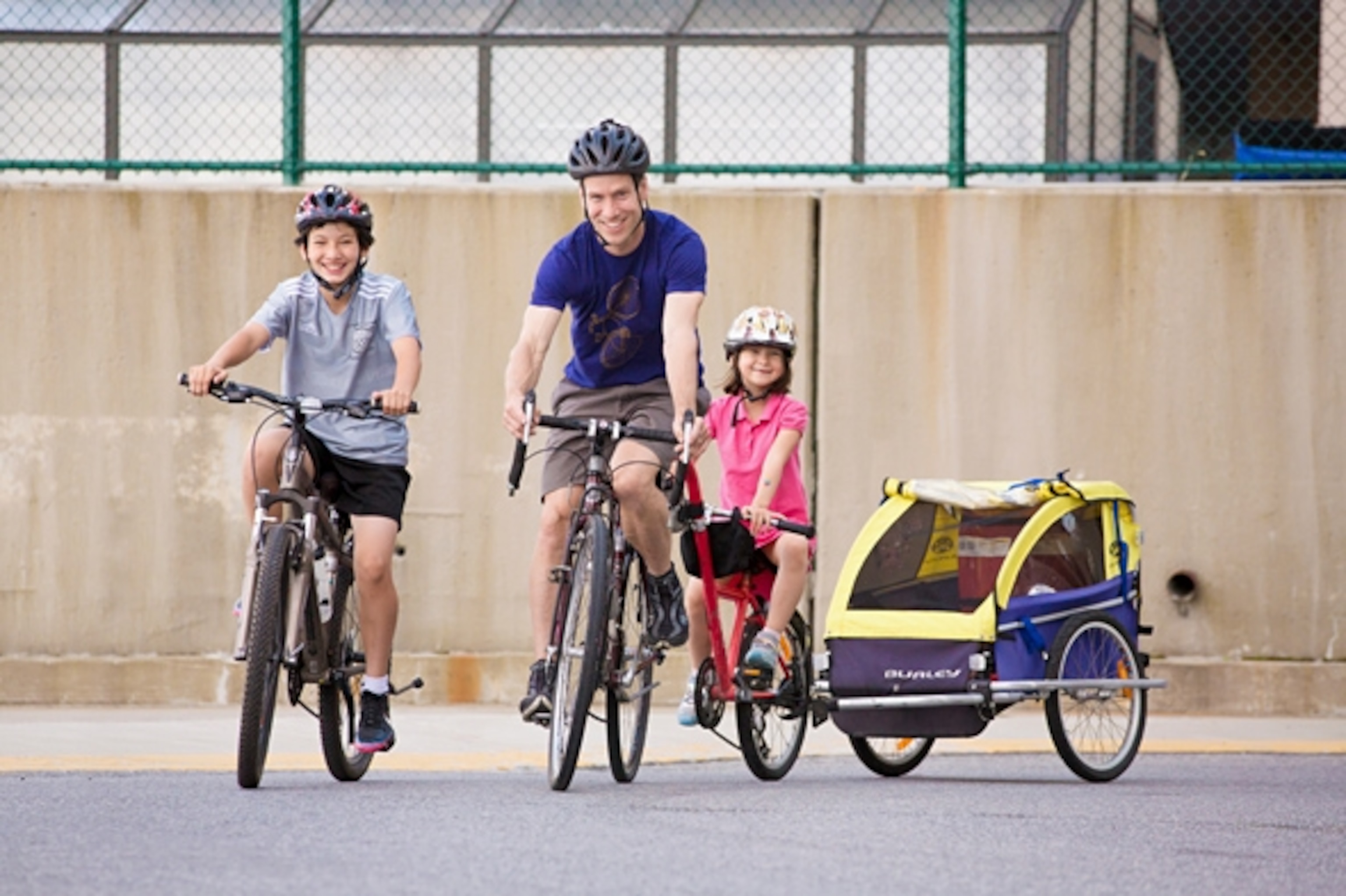
Biking in Lewis + Clark’s Footsteps
“A kid can do a whole lot more than most adults think.” That’s how my eight-year-old son responded to people who thought it was too much for him to cycle with me for 67 days down the length of Japan.
We traveled 2,500 miles on connected bikes carrying about 75 pounds of gear to support a global tree-planting campaign and the United Nations’ efforts to combat climate change. Along the way, we traversed eight mountain passes in the Japanese Alps and took on sumo wrestlers
When we finally made it to the end, my son joked that we should send post cards to the many naysayers with a simple note: “Turns out an eight-year-old can ride a bike all the way across Japan.”
Two years later (and two years ago), we cycled the rim of Iceland — but this time, we brought my four-year-old daughter along. We looked like a long bicycle train with my son on a cycle connected to my bike, and my daughter behind him in a trailer. Once I got us moving, it was easy to stay on a straight line and maintain momentum. But at even the slightest incline, my legs groaned under the weight of the kids and 100 pounds of gear.
Many people asked, “Are you crazy?” They worried that my kids would get bored, exhausted, even frostbitten. My responses:
- Yes, I’m crazy. I want to go on crazy adventures with my kids while they are young. I want to create crazy fun memories together. And I hope that, when they grow up, my children will come up with their own crazy adventures to share with their kids.
Yes, they’ll get bored sometimes. What’s wrong with being bored? That’s what imagination is for.
No, it won’t be too much for them. Children are meant to play outside all day long. Their muscles want to be challenged; their brains crave new experiences; and they come alive in nature.
Yes, we were uncomfortable, even miserable, at times. Any adventure worth having involves a little pain. But the uncomfortable times made us appreciate simple comforts like taking a hot bath or snuggling in our sleeping bags together.
For our next family adventure this summer, my kids and I will be retracing the most famous expedition in American history on the Lewis and Clark Trail. It took the intrepid explorers more than a year and a half to cover this distance. We’ll do it in two months.
We will start by car in St. Louis, head north along the Missouri River, then switch to bikes and ride west through North Dakota, Wyoming, Idaho, and Oregon until we reach the Pacific Ocean. Can two young kids pedal over the Rockies? We are soon to find out.
Along the way, we’ll document the interesting people and places we visit and seek out landscape views that remain unchanged since Meriwether Lewis and William Clark described them in their journals.
The goal of the 1804-1806 expedition was to discover a water passage to the Pacific, but the trip also yielded an abundance of biological information. Lewis identified hundreds of new plants and animals. (Of course, these were not new to the Native Americans who lived along the route.) My kids and I will try to find some of these plants and animals and talk with locals about how the natural environment has changed over time. We’ll also collect data for Adventurers and Scientists for Conservation to help make our roads safer for wildlife.
We’ll learn together, too, by reading the journals of Lewis and Clark along our route. We’ll talk about Sacagawea — a Shoshone woman whose skills as a translator, guide, and mediator proved indispensable to the expeditioners — and York, William Clark’s slave, who also contributed to the expedition’s success (though he and Sacagawea were not paid for their work). And I’ll tell my children stories of earlier generations in my family who headed west as homesteaders.
When Meriwether Lewis turned 31, in the midst of the expedition, he lamented that he had “yet done but little, very little indeed, to further the happiness of the human race, or to advance the information of the succeeding generation.” Lewis may have been being overly humble in the midst of a journey he well knew would be of tremendous significance, but it’s a worthy sentiment.
- National Geographic Expeditions
In an effort to give back ourselves, my kids and I have committed to giving presentations to schools and science museums about what we learned on our trip. We will share conversations we had with ranchers and Native Americans, note the changes to the natural environment along the route in the past two centuries – and even comment upon the travails of perhaps too much quality family time!
When Lewis began his remarkable journey out west in 1804, he wrote: “I could but esteem this moment of my departure as among the most happy of my life.”
I have felt the same at the start of each family adventure I’ve taken with my kids. I can’t wait for this one to begin.
Charles R. Scott is an endurance athlete, family adventurer, and United Nations “Climate Hero.” Follow his epic family adventure on his personal blog and check out the book he wrote about the bicycle trip across Japan, Rising Son.